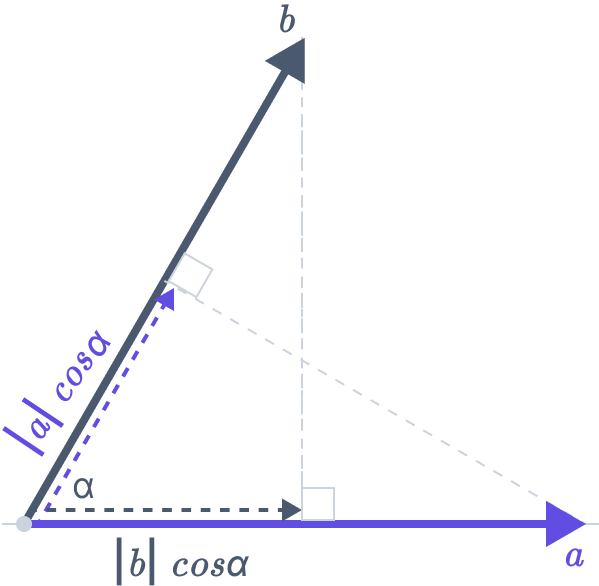Here comes the Dot Product Calculator! We can rapidly display the results and streamline the entire calculation procedure by using our Mathematics Master free online tool calculator to calculate the dot product of provided vectors. Unfold the ease of use and quickness of our calculator for precise dot product solutions and leave the old methods far away & save your time!

Our Dot Product Calculator prioritizes simplicity and dependability over speed. This program guarantees the accuracy of each computation, giving you quick, reliable outcomes. Our calculator is made to effectively work for you whether you’re doing homework, getting ready for an examination, or handling job-related duties.
Anyone can utilize the Dot Product Calculator due to its outstanding user-friendliness. Anyone may easily use this tool, regardless of expertise level. Feel the shift in your approach to solving mathematical issues, which will improve the efficiency and productivity of your workflow. Upgrade your mathematical abilities by adopting this advanced Vector Dot Product Calculator right away!
What is the Definition of Dot Product?
The Dot Product is the name given to the scalar value in mathematics that derives from specific calculations carried out on the vector components. The dot product of two vectors is represented by the thick dot.
Method to Determine Dot Product
If two vectors are a and b, the method used to determine their dot product is as follows:
\( a·b = |a|·|b|·cos(θ) \)
Where:
- |a| and |b| are the magnitude of the vectors
- θ is the angle between the vectors
When cosine is the proportion of the scalar product to the magnitudes of the vectors, the calculator can also be used to determine the angle between two vectors:
\( cos(θ) = \dfrac{a × b}{|a| × |b|} \)
Read More about the Dot Product of Two Vectors.
Characteristics of the Dot Product
The dot product, or scalar product, is a fundamental operation involving vectors. Here are its key characteristics:
Commutative Characteristic
The dot product obeys the commutative law, which states that for any vectors →a and →b, the result of their dot product remains constant regardless of their order:
→a · →b = →b · →a
This indicates that the outcome of the dot product does not depend on the sequence of the vectors.
Distributive Characteristic
The dot product also adheres to the distributive law over the addition and subtraction of vectors:
→a · (→b + →c) = →a · →b + →a · →c
→a · (→b – →c) = →a · →b – →a · →c
This characteristic means that the dot product can be distributed across the addition or subtraction of vectors.
Dot Product Nature
The nature of the dot product is closely related to the angle θ between the two vectors →a and →b:
If θ = 0, then →a · →b = |→a| |→b| cos θ = |→a| |→b|.
If θ = π, then →a · →b = |→a| |→b| cos θ = – |→a| |→b|.
If θ = π/2, then →a · →b = |→a| |→b| cos θ = 0.
If 0 < θ < π/2, then →a · →b > 0 (both vectors point in the same general direction).
If π/2 < θ < π, then →a · →b < 0 (both vectors point in opposite directions).
Dot Product To sum up, the dot product’s sign and magnitude reveal details about the corresponding positions of the vectors:
- Vectors that point in the identical direction are shown by a positive dot product.
- When the dot product is negative, it signifies that the vectors are pointing in opposite directions.
- The vectors are perpendicular if the dot product is zero.
Vector Dot Product Calculator
The cross product, indicated by the sign “×,” and the dot product, also referred to as the scalar product and indicated by the symbol “,” are the two fundamental kinds of scalar multiplication. According to the Vector Dot Product Calculator, the dot product yields a single number as its product, but the cross product yields a vector.
Method for Finding the Dot Product of Two Vectors (Dot Product of Two Vectors Calculator)
A dot product is the total of the products in the cartesian location of two vectors. Unlike the cross product (which is a vector), the dot product also referred to as ab, is just one number.
The two vectors are perpendicular or orthogonal to each other if their dot product equals 0.
Solved Example of Vector Dot Product Calculator
Example 1: Find the dot product of the vectors A and B.
A = 3i + 2j – 5k
B = -6i + 4j + 2k
We need to use the component formula for the dot product of three-dimensional vectors here,
\( a⋅b = a_1 b_1 + a_2 b_2 + a_3 b_3 \)
The dot product is:
\( a⋅b = 2(5) + 3(−6) + 4(7) = 10 − 18 + 28 = 20\)
Dot product = 20
Example 2: Calculate the dot product of: a = (2, 3, 4) and b = (5, −6, 7)
The dot product of two vectors A and B is given by the sum of the products of their corresponding components:
A · B = (3i + 2j – 5k) · (-6i + 4j + 2k)
Now, calculate the dot product:
A · B = 3(-6) + 2(4) + (-5)(2)
A · B = -18 + 8 – 10
A · B = -20
So, the dot product of vectors A and B is -20.
Frequently Asked Questions for Dot Product Calculator
How do we multiply matrices?
Matrix multiplication combines two matrices into a third matrix and is more complex than multiplying scalar numbers. The process requires that the matrices have compatible dimensions, specifically, the number of columns in the first matrix must match the number of rows in the second matrix. The elements of the resulting matrix are calculated using the dot product of the rows of the first matrix with the columns of the second matrix.
What is involved in matrix dot product calculation?
For matrix dot product calculation, multiply each element of a row in the first matrix by the corresponding element of a column in the second matrix and then sum these products. This process is repeated for each row of the first matrix against each column of the second matrix. For instance, the entry in the first row and first column of the resulting matrix is obtained by taking the dot product of the first row of matrix A with the first column of matrix B.
Is the term “dot product equivalent to a projection” correct or not & why?
Yes, this term is correct because the dot product between a vector “a” and a unit vector “u” (represented as “a⋅u”) acts as a projection of vector “a” along the direction of “u”. Essentially, it measures how much vector “a” points in the same direction as vector “u”. This is useful for quantifying the magnitude of “a” that aligns with “u”, representing the projected component along “u’s” direction.
Can't find your query?
Fill out the form below with your query and we will get back to you in 24 hours.
Most commonly used free online Calculators
The most Popular Blogs among people

Cartesian Coordinates System – Dimensions, Formula...
Cartesian coordinates, sometimes called rectangular coordinates, are t...

Math Playground: A Hands-On Approach to Learning M...
Step into the math playground, where the wonders of numbers come to li...

How to Graph a Parabola – Formula, Properties, and...
When you discharge an arrow or throw a stone, it arcs into the air and...